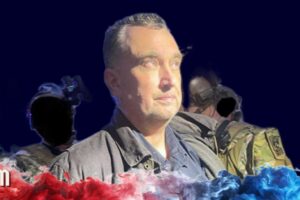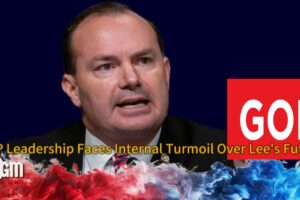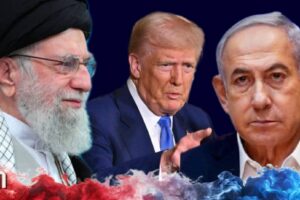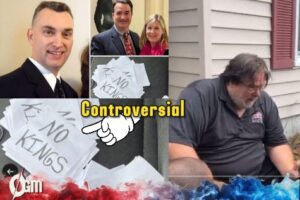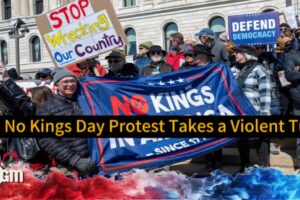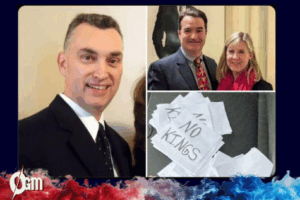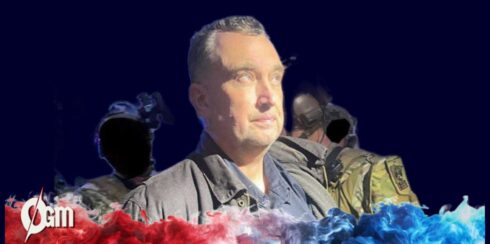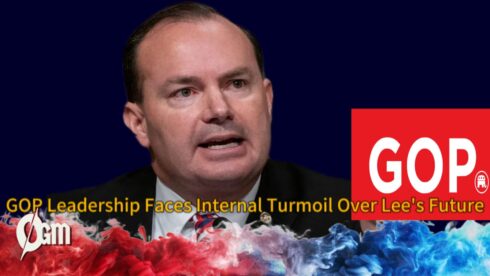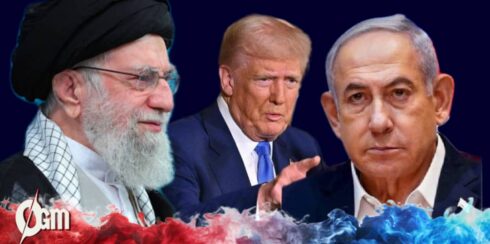On June 14, 2025, while President Donald Trump presided over a massive military parade in Washington, D.C., millions of Americans poured into the streets in simultaneous protests across the nation. Branded the “No Kings” movement, these coordinated demonstrations erupted in more than 1,500 cities and towns spanning all 50 states. Organizers condemned what they described as an authoritarian spectacle that undermined democratic values.
Led by the grassroots 50501 movement and supported by major civil society organizations such as the ACLU, AFL‑CIO, Planned Parenthood, and Indivisible, the protests drew a diverse coalition of union members, students, veterans, and everyday citizens. Marchers carried signs, chanted slogans, and waved the U.S. flag, calling for the defense of democracy and the preservation of civil liberties.
Parade or Power Play? Trump’s $45 Million Display Sparks Controversy
President Trump’s parade marked the 250th anniversary of the U.S. Army and coincided with his 79th birthday. The spectacle featured approximately 6,600 active-duty troops, armored tanks, aerial flyovers, and a dramatic fireworks show on Constitution Avenue. This was the first large-scale military parade held in the capital since 1991, costing taxpayers an estimated $25 to $45 million.
While Trump described the event as a patriotic celebration, critics slammed it as a politicized display of power. Former military leaders and lawmakers raised alarms about the use of national defense assets for what they viewed as a personal tribute. “This isn’t about honoring the troops—it’s about glorifying a single man,” said Sen. Tammy Duckworth, a retired Army lieutenant colonel and decorated veteran.
Tensions Escalate: From Peaceful Protest to Flashpoints
Although most protests remained peaceful, several cities saw tension flare. In Los Angeles, police deployed tear gas and flash-bang grenades near the Federal Building after confrontations broke out between demonstrators and National Guard troops, who were deployed by President Trump against the wishes of California Governor Gavin Newsom. Despite the chaos, hundreds continued to march peacefully just blocks away.
In Minnesota, a tragic shooting at a separate rally claimed two lives, adding to the day’s tension. Although the incident was not directly linked to the parade protests, authorities revealed that “No Kings” flyers were found in the suspect’s vehicle, leading to the cancellation of some planned events in the state. Governor Tim Walz urged citizens to remain cautious, though thousands still turned out in defiance.
Trump’s Reaction: “We Will Use Very Big Force”
In the days leading up to the event, President Trump issued stern warnings against any disruption to the parade. Branding protesters as “unpatriotic,” he threatened to respond with “very big force” if demonstrations turned violent. However, federal agencies, including the Secret Service and Department of Homeland Security, emphasized their commitment to facilitating peaceful protest and reported no credible threats that warranted preemptive crackdowns.
Despite Trump’s rhetoric, law enforcement nationwide largely adopted a restrained approach. Officials in cities such as Houston, Philadelphia, and Chicago facilitated protest routes, managed traffic diversions, and maintained a visible but unobtrusive presence to prevent escalation. In Washington, D.C., security perimeters were fortified around the National Mall, but demonstrators were permitted to gather at designated protest zones near the Capitol.
OGMNews.COM
Trump’s Birthday Parade Sparks National Uprising: Is America Turning Authoritarian

The events of June 14 exposed a nation increasingly divided over the symbols and direction of American democracy. Supporters of the parade praised it as a powerful tribute to U.S. troops and national pride. “Our soldiers deserve this honor, and our president deserves our respect,” said Brian Angel, a veteran who traveled from Virginia to attend the celebration.
But an AP-NORC poll released shortly before the parade revealed a starkly different public mood. Sixty percent of respondents disapproved of the event’s cost and purpose, calling it an inappropriate use of military resources. Only 38% supported the parade. The most vocal critics pointed to the juxtaposition of tanks rolling through D.C. streets while troops were simultaneously deployed in U.S. cities to quell domestic protests.
Immigrant Rights, Public Health, and Civil Liberties at the Forefront
While the parade was the immediate spark, many protesters cited deeper frustrations with Trump’s second-term policies—particularly his aggressive immigration crackdowns and cuts to public health services. In Philadelphia’s Love Park, Karen Van Trieste, a 61-year-old nurse, said she joined the rally due to concerns about public health funding. “This parade is the symbol, but the real issue is what he’s doing to our institutions.”
In Los Angeles, immigration was front and center. Jose Azetcla of the Brown Berets, a Chicano activist group, described the administration’s deportation raids as “not harsh—evil.” His sentiment echoed the message of thousands who turned out in immigrant-heavy communities across the Southwest, demanding a halt to family separations and mass removals. Yet, polling shows Trump’s immigration policies retain support: a CBS/YouGov poll found that 54% of Americans approve of his efforts to deport undocumented immigrants.
A Nation at a Crossroads: Democracy Versus Spectacle
As night fell and fireworks lit up the sky above Washington, D.C., two Americas were on full display: one celebrating military strength and presidential leadership, and another demanding accountability and democratic restraint. Security expert Barbara Starr noted the disturbing optics of uniformed troops marching through the capital while others were deployed domestically to confront dissent. “This parade,” she said, “reveals the uncomfortable tension between patriotism and power in the current moment.”
The “No Kings” protests may not have stopped the tanks, but their resounding turnout marked the largest coordinated demonstration since Trump’s second inauguration. Whether the movement can sustain its momentum remains uncertain, but June 14 will be remembered not only as a day of spectacle—but as a day when millions declared their refusal to be ruled.

